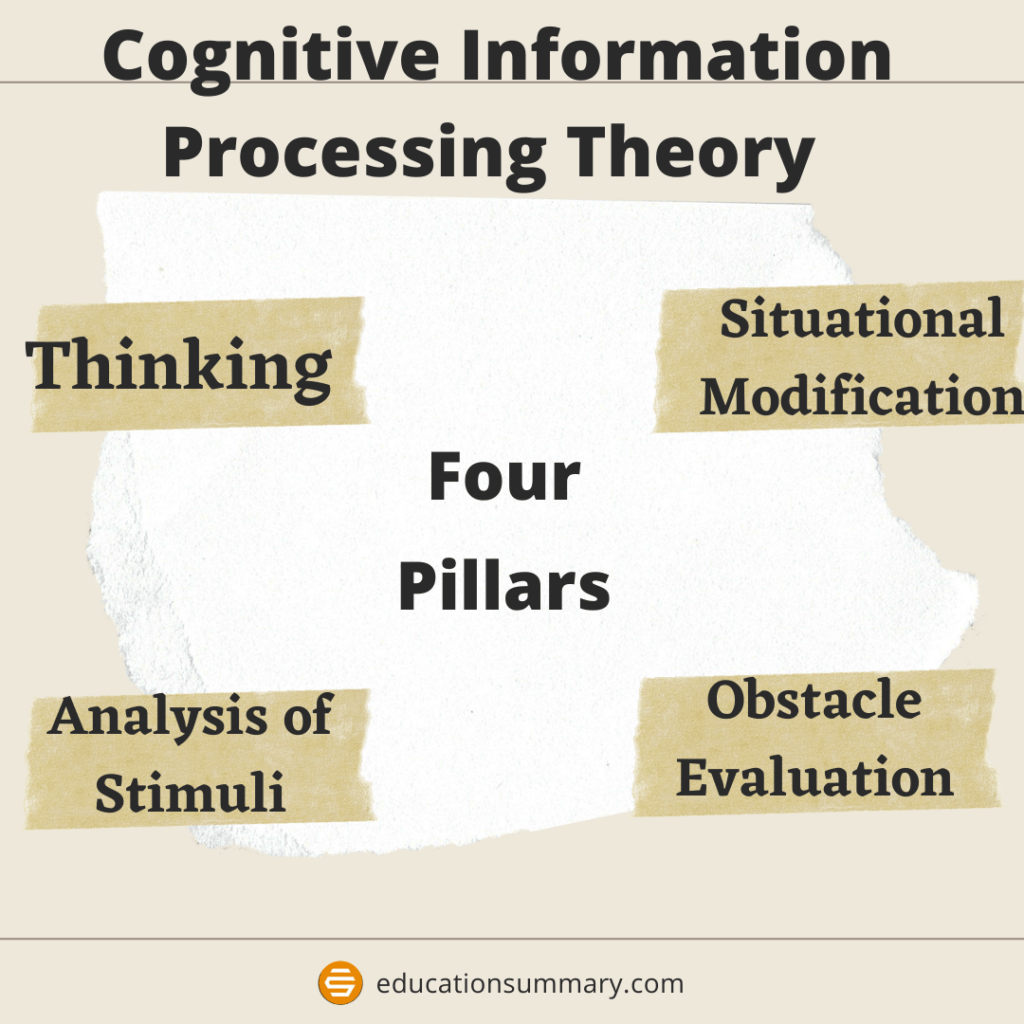Explain Information Processing Theory of Learning with Example
Back to: Learning and Teaching – Unit 2
Introduction
The cognitive information processing theory is concerned with the psychological and intellectual development of an individual from childhood to adulthood involving skills such as problem-solving, recalling, perceiving, conceptualizing, and the like. The cognitive information processing theory refers to how information is processed by the brain and any other intelligent system such as a computing device.
Four Pillars of Information Processing Theory
There are four pillars of the cognitive information processing theory which are as follows:
Thinking
Thinking refers to perception produced by external stimuli. It involves the process of encoding this information and storing the same in the way it has been perceived by one’s mind.
Analysis of Stimuli
It refers to the alteration of the encoded stimuli according to the cognition of the brain and to interpret the process for decision making.
Situational Modification
It refers to the usage of an individual’s experience to take control of a future situation that is similar.
Obstacle Evaluation
Psychologists use this method of evaluation to study children’s cognitive development. During the evaluation of an individual’s cognitive abilities, the obstacle should also be considered.
Conclusion
The cognitive information processing theory puts emphasis on how people encode information that is to be learned and how they relate it to their stored knowledge, store new knowledge, and recall it when needed.


